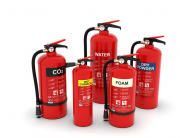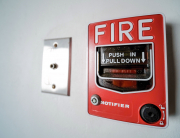In the face of a fire emergency, a well-prepared evacuation plan can mean the difference between life and death. According to the Home Office’s fire statistics, there were 286 fire-related fatalities in England in the year ending June 2023, with 6,211 non-fatal casualties. These sobering figures underscore the critical need for preparedness.
An effective fire evacuation plan is not merely a document; it’s a lifeline that guides occupants to safety when every second counts. In this article let us explore the key components of a comprehensive fire evacuation plan and provide guidance on how to create, implement, and maintain one for your home safety or workplace.
Assessing Fire Risks
The foundation of any effective fire evacuation plan lies in a thorough assessment of potential fire hazards. This process involves:
Identifying Potential Fire Hazards
Begin by conducting a meticulous inspection of your premises. Common fire hazards include:
- Faulty electrical wiring or overloaded circuits
- Flammable materials stored improperly
- Heating appliances placed near combustible items
- Cooking equipment left unattended
- Smoking materials not properly extinguished
- Arson or deliberate fires
Conducting a Fire Risk Assessment
A fire risk assessment helps determine the level of risk present in your building. This assessment should consider:
- The building’s layout and construction materials
- The number of occupants and their typical locations
- The presence of vulnerable individuals (e.g., elderly, disabled)
- Existing fire safety measures and their adequacy
According to the London Fire Brigade, there were 26,376 electrical fires in London from 2017 to the year ending Jun 2023. This statistic emphasises the importance of regular electrical safety checks as part of your risk assessment.
Creating a Fire Evacuation Plan
With a clear understanding of the risks, you can now develop a comprehensive fire evacuation plan. Essential elements include:
Determining Escape Routes
- Identify primary and secondary escape routes from every area of the building
- Ensure these routes are clearly marked and free from obstructions
- Consider the maximum number of people who may need to use each route
Identifying Emergency Exits
- Locate all emergency exits and ensure they are easily accessible
- Check that emergency exit signs are visible and illuminated
- Verify that fire doors are functioning correctly and not propped open
Designating Assembly Points
- Choose safe assembly points outside the building, away from potential hazards
- Ensure assembly points are easily accessible and can accommodate all occupants
- Consider multiple assembly points for larger buildings or complexes
Establishing a Chain of Command
- Clearly define roles and responsibilities for staff members during an evacuation
- Appoint fire wardens or marshals to assist with the evacuation process
- Ensure there’s a system in place to account for all occupants post-evacuation
Considering Special Needs
- Develop personalised emergency evacuation plans (PEEPs) for individuals with disabilities or special needs and Community Risk Management Plan (CRMP) when in a crowd.
- Ensure appropriate equipment (e.g., evacuation chairs) is available and staff are trained in its use
Communicating the Plan
A fire evacuation plan is only effective if all occupants are aware of it and understand their roles. To ensure this, share the plan with all occupants or employees through various channels such as meetings, emails, and training sessions. This helps to ensure that everyone is informed and knows what to do in an emergency.
Post evacuation maps and instructions in visible locations throughout the building. Clear, step-by-step instructions should be provided to guide individuals on what actions to take in case of a fire.
Training and Drills

Regular training and practice drills are crucial for maintaining readiness. Most businesses that experienced a major fire never recovered or ceased operations within three years. This highlights the importance of thorough preparation.
Conducting Fire Safety Training
- Provide comprehensive fire safety training for all staff or household members
- Cover topics such as fire prevention, use of fire extinguishers, and evacuation procedures
- Offer refresher courses at regular intervals to maintain awareness
Appointing and Training Fire Marshals
- Select responsible individuals to serve as fire marshals or wardens
- Provide specialised training on their roles during an evacuation
- Ensure they are easily identifiable during an emergency (e.g., high-visibility vests)
Practicing Fire Evacuation Drills
- Conduct regular fire drills to familiarise everyone with the evacuation process
- Vary the scenarios to simulate different types of emergencies
- Evaluate each drill and use the findings to improve the evacuation plan
Maintaining the Plan
A fire evacuation plan is not a static document; it requires regular review and updates to remain effective.
Regular Review and Updates
- Review the plan at least annually or whenever significant changes occur in the building or occupancy
- Update the plan to reflect any changes in layout, personnel, or procedures
- Ensure all updates are communicated effectively to all occupants
Maintaining Clear Escape Routes
- Regularly inspect escape routes and emergency exits to ensure they remain clear and accessible
- Address any obstructions or hazards immediately
- Implement a system for reporting and addressing potential blockages
Testing and Maintaining Fire Safety Equipment
- Conduct regular checks and maintenance on fire alarms, emergency lighting, and fire extinguishers
- Keep detailed records of all inspections and maintenance activities
- Replace or repair faulty equipment promptly
Your Life-Saving Action Plan

Having an effective fire evacuation plan is a crucial component of fire safety that can save lives and protect property. By following the steps outlined in this guide, you can create a robust plan that will serve as a vital safeguard for your home or workplace.
We strongly encourage you to take action today:
- Begin by assessing the fire risks in your environment
- Create a detailed fire evacuation plan tailored to your specific needs
- Communicate this plan effectively to all occupants
- Conduct regular training and drills to ensure everyone knows what to do in an emergency
- Maintain and update your plan to keep it current and effective
Remember, preparedness is key to fire safety. For comprehensive fire safety tips and guidance, check out the fire safety guidance from the UK Government’s official website.
Additionally, if you need any specific advice tailored to your situation, then contact Northamptonshire Fire and Rescue Service for specific advice. We offer valuable resources and may even provide free home fire safety visits to help you identify and mitigate potential risks.
By taking these steps, you’re not just creating a plan – you’re investing in the safety and well-being of yourself, your family, or your colleagues. Don’t wait for an emergency to strike; start developing your fire evacuation plan today.






